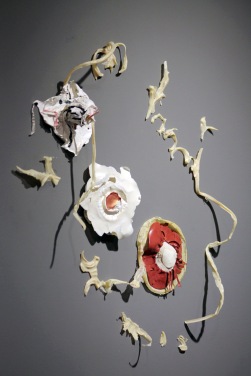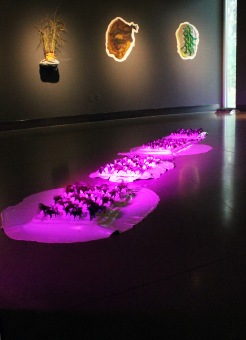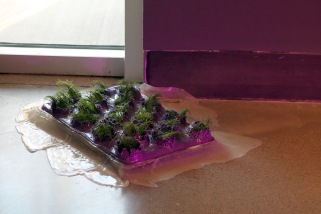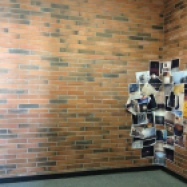














(Un)Earthly Delights is an exhibition about this moment, clutched between earthly pleasures and planetary blights, wrapped in plastic fluorescence.
Cloaked, soaked, and drenched deep under the opaque layers of its postcolonial capitalist crusade history, plastic hides in plain sight in all its glory and infamy. It camouflages itself into our daily lives in its ubiquity and instantaneity, by being the go-to substitute for all our immediate needs from birth to death. It engenders multitudes of surrogacy, everything from food containers, life-saving medical devices, to our always gyrating lover that lives in our bedside table. Of course, its reverse effects are, if not more, just as far-reaching and consequential. Even after having transformed generations of livelihoods, environments, and cultures in the matter of a century, plastic is still incredibly good at hiding its past and future. It is always ready to shine and allure us into the present with its diaphanous illusion of permanence, reproducibility, and of course, plasticity.
Out of all its characteristics, that malleability is probably what makes plastic the ultimate material embodying modernity and universality. Yet, it is perhaps the hardest and the most stubborn material there is. It is hard and stubborn because it refuses its environment, creating a sealant or barrier that remains impermeable to what surrounds it. But then, the lifespans of plastic products are often extremely short, and once purpose served, they turn into a kind of “living walking dead” among us. Despite, and perhaps because of, this uncannily idiosyncratic yet duplicitous nature, plastic continues to be a source of curiosity for me, if it hasn’t already consumed and become part of me. I’m still learning to deal with it, learning to take care of it, and making something out of it, since it is our making after all.
So, with all the campy and perversely self-reflexive queeny welcome I can muster, I invite you to (Un)Earthly Delights, with a hope that it will be an opportunity to imagine an alternative to the relationship we have with this material, both as a remedy and as a practical caution.
-Philippe Hyojung Kim
All documentations of (Un)Earthly Delights viewed here are from July 2022 solo exhibition at Gallery 4Culture, Seattle, WA.
Photo Credit: Joe Freeman and Jueqian Fang.










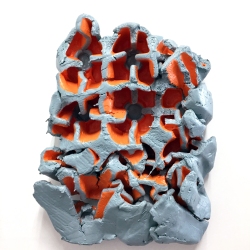














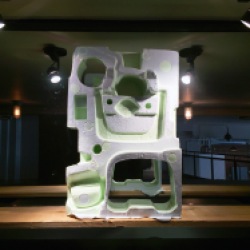












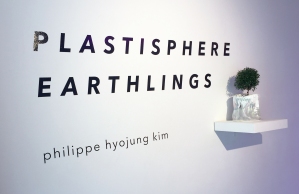


 Plastisphere Earthlings, Dakota Gallery, Bellingham, WA
Plastisphere Earthlings, Dakota Gallery, Bellingham, WA














